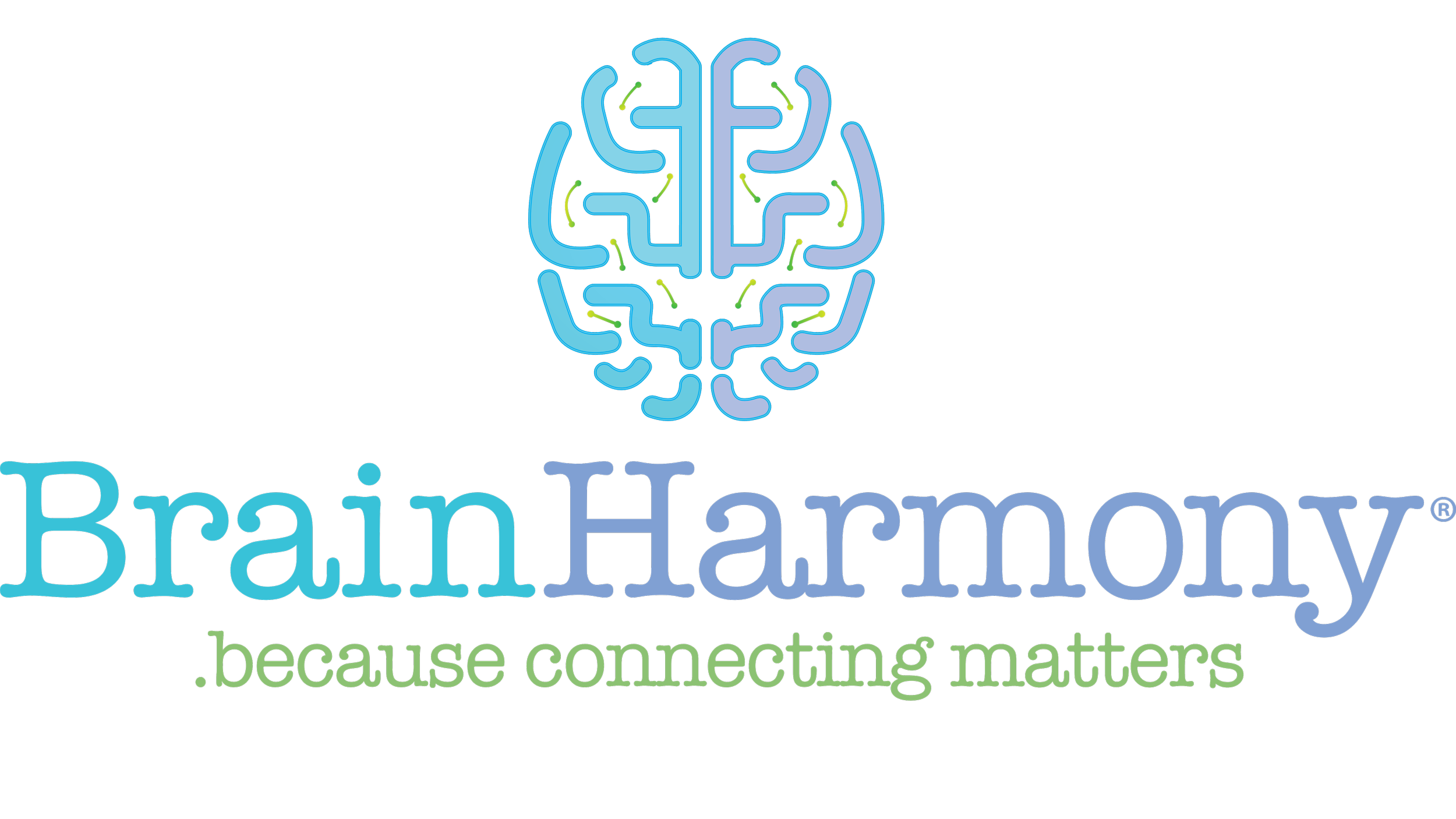How Your Nervous System Impacts Family Dynamics
When two people's nervous systems feel safe together, it improves the bond. Unfortunately, most people are walking around feeling stressed and anxious, which results in unhappy relationship dynamics. By calming your nervous system, and the nervous systems of your loved ones, you enter a new state of mind that allows for a deeper, more meaningful connection. We see this all the time with the families we work with.
One of the most profound and heartwarming things that we see at Brain Harmony is the shift in family dynamics when people's nervous systems feel safe together. Many of our young friends come in to see us due to learning and behavioral issues that stem from a dysregulated nervous system. Meanwhile, the parents of these children find themselves on edge due to the overwhelming responsibilities that come with being an adult in the 21st century, on top of managing their child's needs. Older adult couples are trying to find peace and balance while managing chronic illnesses and loss. This struggle during their lifespan sometimes takes precedence over much-needed intimacy and play.
We see life-changing shifts in family connections that create a whole new level of peace and love at home by walking our clients through our process.
In this article, we'll discuss:
● How family dynamics rely on healthy nervous systems
● Why feeling safe is the first step in intimacy and vulnerability
● Why getting enough sleep is vital to connection and understanding each other
● How Brain Harmony works with families to create a safe bond
Family Dynamics and The Nervous System
To understand how your nervous system can influence your family dynamics, we must first dive into the concept of Polyvagal Theory, which Dr. Stephen Porges developed.
Polyvagal Theory gives us an expanding view of the autonomic nervous system, which was once thought to have only two primary states -- sympathetic activation (fight or flight) or parasympathetic activation (rest and digest). These two branches of your nervous system worked to balance each other out.
Upon studying the vagus nerve, Porges has identified poly (many) vagal branches and has grouped their function into 3 systems.
Understanding the branches of the vagus nerve allows an accelerated understanding that you are neurologically wired to be able to move yourself out of energy-draining states and into restorative body functions that increase your resiliency and connectedness to others.
With these three systems in place, we can look at the autonomic nervous system from a different perspective. Here is a quick breakdown[*]:
Ventral Vagal Branch (SAFETY): This is the safety zone where we can easily find access to our playful, intimate side. This branch can counteract a runaway Fight-Flight-Freeze-or-Fold response, which will then enable connection and co-regulation. Sound luxurious? Then read on, as this safety branch accomplishes all of the following things:
● Inhibits the heart rate and supports calmness.
● Allows us to filter out background noise to make it easier to hear soothing human voices.
● Affects facial muscles, allowing us to make communicative facial expressions and let others know how we're feeling.
● Affects our vocal tone and vocal patterning, helping us create sounds that let others around us know we are safe to engage with.
As we find ourselves under more stress, we get farther away from the Ventral Vagus state and get pulled into the sympathetic responses.
Sympathetic Branch (DANGER): This gets turned on when you come into contact with stress or threat in your environment. This could be anything from a predator in the wild to a nerve-wracking phone call you have to make to your boss. And for people with trauma or anxiety, it can even be triggered by unwanted thoughts or stimuli in the environment. This is your "fight or flight" mode. Your body gets turned on, and chemicals start flowing, recruiting resources so you can fight or flee. Our bodies’ physical and emotional response can include:
● Increased heart rate and respiration
● Increased cortisol levels
● High polarizing energy
● Face loses its expression, more of a flat affect
● Voice loses its melodic quality
● Filtered-out human voices and a search for predator sounds
● Aggression and confrontation
● Avoidance
● Worry
● Anxiety
Dorsal Vagal Branch (LIFE THREAT): This is the Freeze or Fold stage, your “evolutionary defense system” intended to help you survive. It mainly influences the organs below the diaphragm, which includes the bowel and bladder elimination organs. Being stuck in this mode will drain all your energy and resiliency, the body can actually shut down and pass out, or feel like you are living in this state chronically. Our bodies physical and emotional response can include:
● Drop in metabolic rate
● Immobilization (Freeze)
● Shutdown (Fold)
● Numbness
● Collapse
● Dissociation
By looking at the nervous system through this lens, things become a bit more nuanced when it comes to understanding how we relax and connect. In fact, vagal regulation is known to deepen our understanding of our physical body responses and our ability to move in/out of states with more maturity.
It’s easy to see ourselves in each of these states. Imagine yourself on a day where you're overwhelmed and stressed. When you get home, if your nervous system is still on edge from a racing mind and a body that's in fight or flight, it's unlikely that you'll be in top shape to sit down and connect with your loved ones. Unfortunately, this frenetic state is what most people find themselves in on a regular basis.
And to add insult to injury, when you're worked up, you'll likely have a hard time getting enough sleep. Research shows that sleep is actually crucial for your ability to understand facial expressions. That means that when you're sleep-deprived, you may miss the microexpressions on your children’s or partner's faces. This creates a further divide that makes misunderstandings and miscommunication even more likely[*].
How Brain Harmony Helps To Bring Families Together
At Brain Harmony, we use interventions and protocols that strengthen our ventral vagal control over other states. We can accelerate this process with specific tools that push your nervous system into a state of calm and safety. One of our favorite tools called the Safe and Sound Protocol (SSP), is specifically designed to bring clients into a state of social engagement by enhancing the tone of the vagus nerve and activating the ventral vagal branch.
Often within days of beginning the SSP, we start to see shifts in our friends’ ability to communicate and connect. As we continue through our program, that connection gets stronger as individuals start to feel more confident and grounded.
Through neurological reorganization, we assist our clients in creating new pathways in their brains that favor more positive ways of thinking and optimal learning styles. A fortunate side effect of all this work is that many people experience better sleep, less anxiety, and a general sense of well-being.
Families will often go through the Brain Harmony protocol together, and that's where the real magic happens. It's one thing to have your child or partner open up and be more communicative, but as a parent or spouse, if you can get your own nervous system in balance, the sense of safety and connection within the family becomes incredibly strong. Partners have joked on calls with us while experiencing the SSP saying, “I didn't realize this was couples therapy!” The positive shifts for intimacy can be surprising, but also such a great awakening.
We are regularly asked for support items that supplement our Brain Harmony protocols, so we are constantly adding to our Favorites Page. We feature items such as the Somnium Gaba Sleep Cream, which adds even more assistance to that crucial sleep we mentioned. This link will automatically give you 20% off the Gaba Cream.
Here is an adult friend that found his way to us from an interview Carol did with Ari Whitten. This friend had been struggling with trauma from his childhood which dictated much of his human experience, until he experienced vagal regulating aspects of our program.
Charles reports:
“The waves come through, but I let them pass by.
I am neither in a hyper-state or in collapse, which was my old state of existence.
I have learned better practices and they are sticking.
I am more able to follow through with my meditation.
I’m realizing that stuff I thought was me is not me, but more like a habituated response.
It is bringing things up in my counseling sessions which are now more productive.
As my body resets, I can clear things from my system.
The trauma construct is dislodging.
I am a witness to it.”
We could not have said it better ourselves. Here are a few more family success stories.
Micah's Brain Harmony Success Story
Micah was developing normally until 15 months of age, at which point he began to regress. Diagnosed with Autism at two and a half years old, Micah suffered from sensory issues, was primarily nonverbal, and had severe trouble engaging with his family and surroundings. After only a few months of Brain Harmony therapy, Micah began to make eye contact and engage with his family. He has become a happy, vibrant, and engaged child. He shows affection, his sensory sensitivities have reduced, and he has made great progress in school and speech. His family is thrilled with his progress, and they can't wait to see what comes next!
"The two things I would say is that he is just more engaged and he's just happy, he's smiling. He's just happy to be with us, and I think he's happier with life. Honestly, for two years, we rarely saw him smile, and he has a wonderful dimple, so when he smiles, the whole world melts and we're like, oh my gosh, we're seeing him smiling now, and we never saw that before. And of course as a mom all you want for your kid is to be happy, so to see him just happy, to just be alive, it's just really cool, and I'm just super pleased with that."
Conor's Success Story
Ellen's son Conor was diagnosed with Sensory Processing Disorder and slight ADHD. He would have multiple breakdowns, hide, and was perpetually scared. Despite hearing discouraging remarks from Conor's initial behavioral specialists, Ellen refused to lose hope that Conor's condition would improve. 2 days after completing his first five-day protocol with Brain Harmony, Conor made eye contact and was socially engaged in a way his family had never witnessed before.
"By the time he started second grade, he was a different kid. He walks through the halls differently, he holds his head differently. He was comfortable in his skin, he was a happier child. When you have this therapy in your home and you're using it and encouraging your child to use it.. it's going to change your life. It really is."
Takeaway
At Brain Harmony, we've worked with thousands of clients and hundreds of families, taking them through our unique 5-step protocol. One of the surprising side effects that we started to see early on was the enhanced bond between parents and their children. As individuals' nervous systems begin to calm, the doors for communication and connection open up. While our young friends were going through our program, their parents would tell us excitedly about the progress they were also making, not only scholastically but socially as well.
At this point, we've seen it so many times that it's no longer shocking when families come to us more united and loving after beginning our protocol. If you would like to learn more about how Brain Harmony balances the nervous system and uses unique tools and protocols for neurological reorganization, schedule a Free Consultation today.





